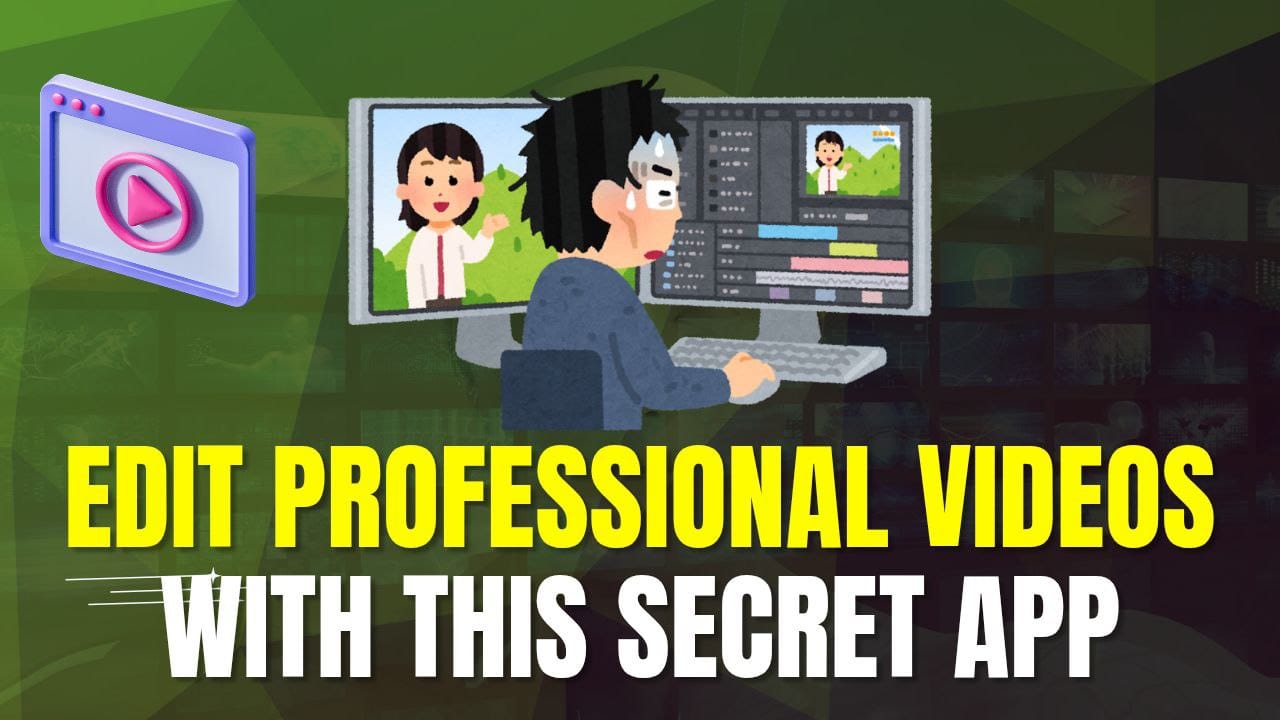Introduction
Whether you are a content creator, marketer, or simply someone who enjoys recording memories, video files have become an inseparable part of our life. However, raw footage alone does not make your videos stand out; you need solid editing skills.
Importance of Video Editing in Today’s World
In a visual-driven world, editing is what makes a regular clip, a great clip. Whether you do it for YouTube, social media, or your own projects, good editing keeps viewers interested and gets your content stuck in their head.
Features to Consider When Looking for a Video Editing App
Ease of Use
The interface should be intuitive, particularly to beginners. Find an app that’s intuitive and doesn’t have a steep learning curve.
Advanced Editing Tools
For more complicated projects, features such as multi-track timelines, keyframe animations, and advanced color grading are useful.
Essential Effects and Transitions
A library tired of effects, filters, and transitions saves time and adds flair to your videos.
Audio Enhancement Tools
Good audio is as vital as good visuals. Additional features such as noise reduction, audio equalizers, and background music libraries are a great bonus.
How to Get Started with Video Editing
Installing the App
Download the app from the official website or the app store. Just follow the installation prompts to get going.
Understanding the Interface
Get to know the timeline, the preview window, the media library, and the toolbars. Your workflow will be faster when you know where everything is.
Importing Your First Video
Hit ‘Import’, then choose your video clips. You should list them in the media library for easy access.
10 Simple Tricks for Video Editing
Cutting and Trimming
Cut and trim, trim for the perfect timing.
Adding Text and Titles
Add text overlays to create titles, subtitles, or captions. Design custom fonts, colors, and animations.
Applying Filters and Effects
Add color filters and other visual effects to create the desired mood in your footage.
Advanced Video Editing Tips
Color Grading Basics
Adjust brightness, contrast, saturation, and hues to ensure a professional look for your video.
Working with Keyframes: Creating Dynamic Effects
Through keyframes, you can animate properties such as position, scale, and opacity to produce smooth transitions and motion effects.
Working with Audio
Adding Background Music
Background music: Import background tracks to create atmosphere in your video. Set levels to match with dialogue.
Syncing Audio with Video
Make sure audio clips correspond to actions in video.
Noise Reduction Techniques
Background noise clean up — This helps in removing hissing regional or humming sound.
Transitions and Effects
Which Transitions Should You Use
Choose transitions that fit the tone of the video. Cuts, fades, and simple wipes are often the most effective.
Creating Custom Effects
Use blending modes, masking, and layering to create interesting visual effects.
Exporting Your Video
Optimal Export Settings for Various Platforms
While your software already has predefined templates for exporting your videos, we wholeheartedly encourage you to play around with these settings a little bit. Choose a resolution, bitrate, and format depending on where you’re uploading the video (YouTube, Instagram, etc.).
Optimizing Video Quality
Export your videos to HD or 4K without degrading quality with appropriate compression settings.
Mistakes You Should Never Make In Video Editing
- Using too many effects and transitions
- Ignoring audio quality
- Poor pacing and flow
11 Tricks to Make Your Videos Stand Out
- Focus on storytelling
- Make sure the visuals and sound are high quality
- Apply some creative edits
Social Media Video Editing
Platform-Specific Tips
To make it work, each platform has its own likes and dislikes. Vertical videos do well on TikTok, horizontal formats are best suited for YouTube.
Resolutions
Change aspect ratios (16:9, 9:16) and, ultimately, change resolutions to adjust to the platform.
Troubleshooting Common Issues
- Fixing laggy previews
- Resolving export errors
- Handling audio sync issues
How to Get Better At Video Editing Over Time
- Practice regularly
- Watch tutorials
- Look for inspiration in professionally edited videos
Conclusion
Turning a film into a video is an art, though as with virtually everything else, it gets better with practice. Understanding the basics, trying out advanced techniques, and keeping up with the trends will help you build videos that can truly captivate and inspire.
FAQs
What should you do if your video editing is lagging?
These might be because of high-resolution files, low RAM, or outdated software. Reducing the quality of the previews helps.
What is the ideal format for video export?
MP4 is used a lot for its compatibility and quality-to-size ratio.
How long will it take to learn video editing?
You can learn basic skills in a few weeks, but it may take months to master advanced techniques.
Can you edit videos on your phone?
Yes, lots of apps give you powerful editing capabilities, even for quick projects.
How can I enhance the quality of video?
Ensure proper lighting and high-resolution footage and export settings for best results.











Chandini
Masarapuchandraiah@gmail.com
Cribad.com/vedio-editing-with-a-secret-app/